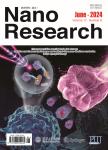In situ decomposition of metal-organic frameworks into ultrathin nanosheets for the oxygen evolution reaction
In situ decomposition of metal-organic frameworks into ultrathin nanosheets for the oxygen evolution reaction作者机构:Key Laboratory of Colloid and Interface Chemistry of State Education Ministry School of Chemistry and Chemical Engineering Shandong University Jinan 250100 China Tianjin Key Laboratory of Advanced Functional Porous Materials School of Materials Science and Engineering Tianjin University of Technology Tianjin 300384 China
出 版 物:《Nano Research》 (纳米研究(英文版))
年 卷 期:2016年第9卷第6期
页 面:1856-1865页
核心收录:
学科分类:0808[工学-电气工程] 081704[工学-应用化学] 0809[工学-电子科学与技术(可授工学、理学学位)] 07[理学] 081705[工学-工业催化] 08[工学] 0817[工学-化学工程与技术] 0805[工学-材料科学与工程(可授工学、理学学位)] 080502[工学-材料学] 0703[理学-化学] 070301[理学-无机化学] 0702[理学-物理学]
基 金:国家973计划 国家自然科学基金 the Ph.D. Programs Foundation of the Chinese Ministry of Education
主 题:oxygen evolution reaction metal-organic frameworks(MOFs) in situ decomposition ultrathin nanosheets electrocatalyst
摘 要:The oxygen evolution reaction (OER) is a pivotal process for water-splitting and many other energy technologies involving oxygen electrodes. Herein, a new synthesis strategy is proposed to prepare OER catalysts based on a simple yet flexible in situ decomposition of Co-based acetate hydroxide metal-organic frameworks (MOFs). This process allows straightforward fabrication of various 2D hydroxide ultrathin nanosheets (UNSs) with excellent component controllability. The as-obtained Co-based hydroxide UNSs demonstrate superior catalytic activity for the OER due to the exposure of numerous active sites. In particular, the CoNi hydroxide UNSs exhibit low overpotentials (r/) of 324 and 372 mV at current densities of 10 and 100 mA-cm-2, respectively; a large turnover frequency (TOF) of 0.16 s-~ at T/= 380 mV; and a small Tafel slope of 33 ***-~ in an alkaline environment. Importantly, these values are superior to those of the state-of-the- art IrO2 commercial electrocatalyst. This facile strategy enables the exploration of more efficient and economic OER electrocatalysts with various constituents and opens a promising avenue for large-scale fabrication of functional nanocatalysts for use in clean ener~:v technologies.



